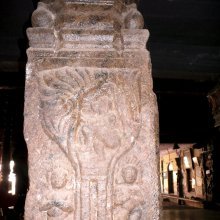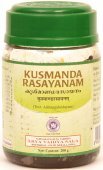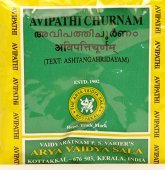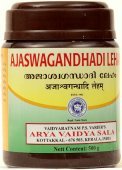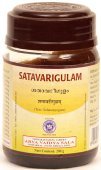Trijata, Tri-jata, Trijāta, Trijaṭā, Trijaṭa: 13 definitions
Introduction:
Trijata means something in Buddhism, Pali, Hinduism, Sanskrit, Marathi. If you want to know the exact meaning, history, etymology or English translation of this term then check out the descriptions on this page. Add your comment or reference to a book if you want to contribute to this summary article.
Images (photo gallery)
In Hinduism
Ayurveda (science of life)
Source: Google Books: Essentials of AyurvedaTrijāta (त्रिजात).—The Sanskrit name for an important Ayurvedic drug combination.—Elā, Tvak and Patra together make Trijāta.

Āyurveda (आयुर्वेद, ayurveda) is a branch of Indian science dealing with medicine, herbalism, taxology, anatomy, surgery, alchemy and related topics. Traditional practice of Āyurveda in ancient India dates back to at least the first millenium BC. Literature is commonly written in Sanskrit using various poetic metres.
Purana and Itihasa (epic history)
Source: archive.org: Puranic Encyclopedia1) Trijaṭa (त्रिजट).—(GĀRGYA). A sage. Though he was a sage he lived by farming. He had a wife and children and his earnings from farm work were insufficient to make both ends meet. They were living in poverty and it was at that time that Rāma started for his life in exile in the forests. Before he commenced his journey to the forests he gave immense wealth to all the Brahmins who had assembled around him. At that time Trijaṭa never knew about it and when it came to the ears of Trijaṭa’s wife she ran to the fields and persuaded Trijaṭa to go and see Śrī Rāma. When Trijaṭa came to the scene, Rāma had almost finished his distribution, but Trijaṭa took courage and pushing forward through the crowd approached Rāma and said "Oh, famous King, I am a poor man with many children. Give something for this poor man who lives by farming."
Hearing this, Śrī Rāma giving him a small stick asked him to throw the stick into the midst of the cattle grazing nearby. The Brahmin tightening his clothes and getting ready threw the stick with all his might to the south. The stick fell beyond a lakh of cattle grazing there. Śrī Rāma gave him all the cattle which stood inside the area covered by the stick. (Chapter 32, Ayodhyā Kāṇḍa Vālmīki Rāmāyaṇa).
Trijaṭa was the son of Viśvāmitra. (Śloka 55, Chapter 4, Anuśāsana Parva).
2) Trijaṭā (त्रिजटा).—A servant demoness of the palace of Rāvaṇa. Trijaṭā was one among the demonesses who were deputed to entice Sītā, sitting dejected under the Aśoka tree, to the side of Rāvaṇa. All the demonesses siept around Sītā. Trijaṭā had a dream one night which is described in Chapter 27 of Sundara Kāṇḍa thus:
Source: Archaeological Survey of India: Śaiva monuments at Paṭṭadakal (rāmāyaṇa)Trijaṭā (त्रिजटा) is one of those demonesses who are kind to Sītā. She told the others to be kind to their captive and not to trouble her. She tells them about the dream she had at dawn. She dreamt that Rāma and Lakṣmaṇa were seated in an ivory palanquin shining like two suns. Waiting for them, Sītā, with all the decorations of a splendid princess, dressed in white, was standing on the peak of a mountain, whereas Rāvaṇa with shaven head was dressed all in black. All that she saw a propos of Rāma and his consort are of good omen, whereas for Rāvaṇa, there were signs of death. On hearing this, all demonesses are enveloped by distress.

The Purana (पुराण, purāṇas) refers to Sanskrit literature preserving ancient India’s vast cultural history, including historical legends, religious ceremonies, various arts and sciences. The eighteen mahapuranas total over 400,000 shlokas (metrical couplets) and date to at least several centuries BCE.
Shaivism (Shaiva philosophy)
Source: academia.edu: A Critical Study of the Vajraḍākamahātantrarāja (II) (shaivism)Trijaṭa (त्रिजट) is the name of a Kṣetrapāla (field-protector) and together with Prasannāsyā they preside over Parastīra: one of the twenty-four sacred districts mentioned in the Kubjikāmatatantra. Their weapon is the vajra and śṛṅkhala. A similar system appears in the 9th century Vajraḍākatantra (chapter 18).

Shaiva (शैव, śaiva) or Shaivism (śaivism) represents a tradition of Hinduism worshiping Shiva as the supreme being. Closely related to Shaktism, Shaiva literature includes a range of scriptures, including Tantras, while the root of this tradition may be traced back to the ancient Vedas.
In Buddhism
Tibetan Buddhism (Vajrayana or tantric Buddhism)
Source: academia.edu: A Critical Study of the Vajraḍākamahātantrarāja (II)Trijaṭa (त्रिजट) is the name of a Kṣetrapāla (field-protector) and together with Prasannāsyā Devī they preside over Jayantī: one of the twenty-four sacred districts mentioned in the 9th century Vajraḍākatantra (chapter 18). Their weapon is the vajra and śṛṅkhala and their abode is a divine place. A similar system appears in the tradition of Hindu Tantrims, i.e., in the Kubjikāmatatantra (chapter 22), which belongs to the Śākta sect or Śaivism.

Tibetan Buddhism includes schools such as Nyingma, Kadampa, Kagyu and Gelug. Their primary canon of literature is divided in two broad categories: The Kangyur, which consists of Buddha’s words, and the Tengyur, which includes commentaries from various sources. Esotericism and tantra techniques (vajrayāna) are collected indepently.
Languages of India and abroad
Marathi-English dictionary
Source: DDSA: The Molesworth Marathi and English Dictionarytrijāta (त्रिजात).—n An aggregate of three spices--cinnamon, cardamons, and leaf of Laurus cassia.
Marathi is an Indo-European language having over 70 million native speakers people in (predominantly) Maharashtra India. Marathi, like many other Indo-Aryan languages, evolved from early forms of Prakrit, which itself is a subset of Sanskrit, one of the most ancient languages of the world.
Sanskrit dictionary
Source: DDSA: The practical Sanskrit-English dictionaryTrijaṭa (त्रिजट).—an epithet of Śiva.
Derivable forms: trijaṭaḥ (त्रिजटः).
Trijaṭa is a Sanskrit compound consisting of the terms tri and jaṭa (जट).
--- OR ---
Trijaṭā (त्रिजटा).—Name of a female demon, one of the Rākṣasa attendants kept by Rāvaṇa to watch over Sītā, when she was retained as a captive in the Aśoka-vanikā. She acted very kindly towards Sītā and induced her companions to do the same; सीतां मायेति शंसन्ति त्रिजटा समजीवयत् (sītāṃ māyeti śaṃsanti trijaṭā samajīvayat) R.12.74.
Trijaṭā is a Sanskrit compound consisting of the terms tri and jaṭā (जटा).
--- OR ---
Trijāta (त्रिजात).—The three spices (mace, cardamoms, cinnamon).
Derivable forms: trijātam (त्रिजातम्).
Trijāta is a Sanskrit compound consisting of the terms tri and jāta (जात). See also (synonyms): trijātaka.
Source: Cologne Digital Sanskrit Dictionaries: Edgerton Buddhist Hybrid Sanskrit DictionaryTrijaṭā (त्रिजटा).—name of a nāga maid: Kāraṇḍavvūha 3.23.
Source: Cologne Digital Sanskrit Dictionaries: Cappeller Sanskrit-English DictionaryTrijaṭa (त्रिजट).—[adjective] wearing three braids of hair; [feminine] ā [Name] of a Rakṣasi.
Source: Cologne Digital Sanskrit Dictionaries: Monier-Williams Sanskrit-English Dictionary1) Trijaṭa (त्रिजट):—[=tri-jaṭa] [from tri] mf(ā)n. = -kapardin, [Mahābhārata iii], (Śiva), [>xii]
2) [v.s. ...] m. Name of a Brāhman, [Rāmāyaṇa ii]
3) Trijaṭā (त्रिजटा):—[=tri-jaṭā] [from tri-jaṭa > tri] f. Aegle Marmelos, [Jñānabhair.]
4) [v.s. ...] Name of a Rākṣasī (who was friendly to Sītā), [Rāmāyaṇa iii, v f.; Raghuvaṃśa xii, 74]
5) [v.s. ...] of a Nāga virgin, [Kāraṇḍa-vyūha i, 43]
6) Trijāta (त्रिजात):—[=tri-jāta] [from tri] n. the 3 spices (mace, cardamoms, and cinnamon), [Suśruta; Daśakumāra-carita]
Source: DDSA: Paia-sadda-mahannavo; a comprehensive Prakrit Hindi dictionary (S)Trijaṭā (त्रिजटा) in the Sanskrit language is related to the Prakrit words: Tiaḍā, Tijaḍa.
[Sanskrit to German]
Sanskrit, also spelled संस्कृतम् (saṃskṛtam), is an ancient language of India commonly seen as the grandmother of the Indo-European language family (even English!). Closely allied with Prakrit and Pali, Sanskrit is more exhaustive in both grammar and terms and has the most extensive collection of literature in the world, greatly surpassing its sister-languages Greek and Latin.
See also (Relevant definitions)
Starts with: Trijataka, Trijatasvapnadarshana.
Query error!
Full-text: Trijatasvapnadarshana, Atrijata, Prasannasya, Trigandhaka, Tiada, Tijada, Tiricatai, Trisugandhi, Trijataka, Gargya, Tiricatam, Parastira, Tripattra, Jayanti, Jata.
Relevant text
Search found 25 books and stories containing Trijata, Tri-jata, Tri-jaṭa, Tri-jaṭā, Tri-jāta, Trijāta, Trijaṭā, Trijaṭa; (plurals include: Trijatas, jatas, jaṭas, jaṭās, jātas, Trijātas, Trijaṭās, Trijaṭas). You can also click to the full overview containing English textual excerpts. Below are direct links for the most relevant articles:
Skanda Purana (by G. V. Tagare)
Chapter 115 - Gotras of Sages < [Section 1 - Tīrtha-māhātmya]
Chapter 114 - The Term ‘Nāgara’ < [Section 1 - Tīrtha-māhātmya]
Chapter 113 - Greatness of Agnikuṇḍa < [Section 1 - Tīrtha-māhātmya]
Puranic encyclopaedia (by Vettam Mani)
Ramayana of Valmiki (by Hari Prasad Shastri)
Chapter 47 - Sita sees Rama and Lakshmana lying on the Battlefield < [Book 6 - Yuddha-kanda]
Chapter 27 - Trijata’s Dream < [Book 5 - Sundara-kanda]
Chapter 32 - Shri Rama bestows his wealth < [Book 2 - Ayodhya-kanda]
AYU (Journal of Research in Ayurveda)
A compendious review of Chitraka Haritaki Avaleha – A polyherbal Ayurveda formulation for bronchial asthma < [Volume 41 (1); 2020 (Jan-Mar)]
Sanskrit dramas by Kerala authors (Study) (by S. Subramania Iyer)
10.5. Characterisation of Karambaka < [Chapter 6: Sita Raghava (Study)]
2. Plot (summary) of the Sita-Raghava < [Chapter 6: Sita Raghava (Study)]
7. Characterisation of Sita < [Chapter 6: Sita Raghava (Study)]
Paumacariya (critical study) (by K. R. Chandra)
V.4. Forcible removal of Sita by Ravana to Lanka < [Chapter 3 - Comparative study of the Rama-story]
4. Genealogy of the Raksasa Vamsa dynasty < [Chapter 5 - Origin and Genealogy of Various Vamshas]
VIII.3. First casualties in Battle < [Chapter 3 - Comparative study of the Rama-story]
Related products
(+7 more products available)
